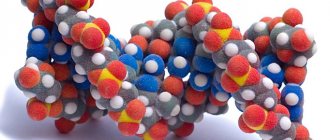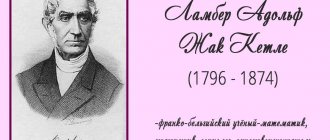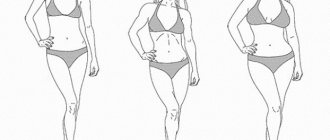People all over the world differ from each other in appearance. Some are thin, others have toned, athletic figures, and some have wide bones. And very often these indicators do not depend on going to the gym or dieting. Belonging to one type or another is genetically inherent in people.
The predisposition to gain excess weight, to burn all the sweets you eat, or to actively develop muscles is built on the speed of metabolism. It is the metabolism and skeletal structure that determines which somatotype a person belongs to.
The concept of human somatotype
Somatotype is a type of constitution of the human body, which is characterized by certain features of the development of its skeleton, muscles, as well as subcutaneous fatty tissue, genetically determined by the peculiarities of the metabolic processes occurring in the body.
The founder of the somatotyping system, W. Sheldon, proposed the main body types: ectomorph, mesomorph, endomorph. The proposed theory of the main somatotypes of the human body is based on anthropometric measurements using photographic techniques.
The concepts “mesomorph”, “endomorph”, “ectomorph” were borrowed from embryology and correspond to the names of the germ layers:
- endoderm - inner layer;
- mesoderm - middle leaf;
- ectoderm - outer layer.
In accordance with the theory of embryo development, the endoderm gives rise to the development of internal organs, the mesoderm - muscles, bones and blood vessels, the ectoderm - hair, nails, nervous system and brain. W. Sheldon identified seventeen dimensions, which were calculated on a seven-point scale and described using three main indicators.
Ways to determine your somatotype
How to understand what type a particular person belongs to? There are several ways to find out. You can be guided by faster evaluation methods, or use precise formulas that will require a more in-depth study of the issue. The second category of methods for determining somatotype requires more information and time for calculations.
The methods below range from simple to more complex.
1) Visual assessment method
Anyone can use this method. The information necessary to determine the type of body structure is knowledge of all the external characteristics inherent in an ectomorph, mesomorph and endomorph.
When looking at a particular individual, a well-read person can easily understand and identify belonging to one of the three body types.
2) Wrist measurement
This is a fairly old method, the reliability of which many experts today doubt. This definition is based on the measurement of a person's wrist. At the same time, a girth of 17.5 cm in length was initially considered the norm. A smaller wrist girth indicated that its owner was a thin-boned ectomorph. Mesomorphs will have a wrist circumference of up to 20 cm, while those with more impressive figures are endomorphs.
An even more old-fashioned way of determining the relationship between wrist size and somatotype will be effective if there are no measuring instruments at hand. You need to clasp your wrist with your middle and thumb fingers.
If the thumb overlaps the middle finger, then the person is an ectomorph. If the fingers only touch, then the owner of such a wrist is a mesomorph. And if the fingertips do not reach each other, then this is a clear sign of belonging to the endomorphic type.
3) Height to weight measurements
For this, different techniques are used. The simplest and most approximate way would be to subtract 110 from the height indicator in centimeters if the height does not exceed 170 centimeters. The resulting difference will approximately correspond to the ideal weight. Depending on the difference between this figure and the body weight, you can find out what type a person’s weight is close to.
A more complex method involves age-based calculations. The formula allows you to calculate your ideal weight, which is equal to: 50 + 0.75x(height in cm – 150) + (age in years – 20) / 4.
4) Using tables
You can also use the method of determining your body type using a table. To do this, you need to know your weight, height and age and, using the values indicated in the diagram, identify your belonging to one or another somatotype.
5) Calculations using formulas
The most accurate approach is considered to be the use of formulas that include several variables, including limb girths, body mass index, and measurement of skin folds. These formulas, derived by anthropologists, are named after their researchers.
So, among the most famous are the somatotyping of Heath-Carter, Chernorutsky, Chtetsov.
6) Analysis of human inclinations
An additional way to clarify knowledge about a particular somatotype would be to study the tendency to be overweight and the body’s reaction to different types of stress. Thus, the tendencies of an ectomorph include a low ability to gain weight, fat and muscle.
There are special calculators that allow you to find out what somatotype a person belongs to. Some measured parameters are taken as a basis, for example, hand and hip girths, height, weight.
Body types according to W. Sheldon
- Mesomorphic (1-7-1). A type of person with proportional body development, good physical development and mental stability.
- Endomorphic (7-1-1). People with excessive development of internal organs and excess body weight due to fat deposits.
- Ectomorphic (1-1-7). This type is characterized by poor development of internal organs, low body weight, fragility and sophistication.
If individual criteria are equally identified in a person, the physique is qualified as mixed (1-4-4).
What classifications exist?
The problem of structuring the constitution of human bodies has its roots in antiquity. Thus, Hippocrates, the father of medicine, established a relationship between a person’s physique and a person’s tendency to certain diseases.
Nowadays, there are several dozen such classification systems. The main classification parameters are the proportions of body parts, the development of skeletal muscles and the amount of fat in the body.
For example, the system of the German scientist Ernst Kretschmer divides people into the following 3 types.
- Asthenics are thin, tall people with often pale and thin skin, elongated limbs, and relatively small “width” sizes.
- Picnics are people with a high percentage of body fat. The growth of picnics is average or below average. The neck is thick, merging with the rounded head. The face is wide and shallow. Picnics are prone to obesity.
- Athletics are the type of people that live up to their name. Athletes have well-proportioned muscles and a harmoniously constructed skeleton.
A similar system of Chtetsov, which is basic for medicine, uses similar types.
- Asthenics, which are characterized by weak muscles and thinness. The limbs and chest are elongated relative to the overall size of the body.
- Normosthenics. A type with well-developed muscles and limbs proportional to the length of the body.
- Hypersthenics. A type with an increased width-height ratio. Often hypersthenics are overweight.
In the English-speaking world, the generally accepted classification developed by William Sheldon and introduced in 1940, according to which human bodies are divided into endomorphs, mesomorphs and ectomorphs.
- Endomorph - according to Sheldon, an idealized, maximally well-fed person with weak muscles, a large belly, thin wrists and a round head. Naturally, an endomorph has a tendency toward obesity. It is also interesting to note that, according to Sheldon’s expressions, with severe food restriction, the endomorph remains the same hungry endomorph. The similarity of such a person does not increase with either an ectomorph or a mesomorph.
- Mesomorph is an athletically developed person with harmonious proportions, a large head, and broad shoulders. A mesomorph has a minimum percentage of body fat.
- An ectomorph is a thin, tall person with elongated limbs, a narrow chest and almost zero fat content under the skin. The ectomorph's skeletal muscles are poorly developed.
The peculiarity of the Sheldon system is to characterize the human body according to the degree of similarity to each of the three types. The maximum degree of similarity is 7, the minimum is 1, that is, the formula of a pure ectomorph in units of the Sheldon system is (1-1-7).
Thus, the physique of an individual person is characterized by the percentage of presence of signs of each of the three basic types. For example, type (2-5-3) is the preferred mesomorph (83%), which, however, has characteristics of an endomorph (33%) and ectomorph (50%). Naturally, the most beneficial type for athletic sports is the type (1-7-1) - one hundred percent mesomorph.
Several very important facts should be emphasized:
- A fairly large percentage of people belong to mixed types. There are very few pure endomorphs, ectomorphs and mesomorphs;
- According to Sheldon, the constitution of the body cannot be changed. To some extent, muscle size, their proportions, and a person’s weight can be corrected, but not somatotype. However, in modern sports practice, significant temporary transformations of the parameters of the human body are possible.
- The human body can be made up of parts that suit different body types.
There are also mixed types, here is a good video on this topic:
One of the results of Sheldon's work is the "atlas of man." Guided by the atlas and three photographs (side, front and back views), it was possible to determine a person’s somatotype.
The Sheldon system is not used by modern science, but is the basis for more modern somatotype classification systems. For example, Parnell's system excludes evaluation from photographs and takes into account three main characteristics:
- height-weight ratio;
- the size of the “girth” of the limbs and body;
- percentage of fat, characterized by skin folds.
General characteristics of the main types of body constitution
Each type of body constitution - ectomorph, mesomorph, endomorph (photos below) - has its own, unique characteristics.
Representatives of ectomorphs are energetic and hyperactive, but not strong and resilient enough. They are thin, have narrow shoulders and chest, and elongated limbs. The neck of representatives of this type is long and thin. Their muscle mass is poorly developed, their joint apparatus is small, their bones are narrow and thin. People belonging to this somatotype, without exhausting themselves with various diets and physical activity, have a weakly defined layer of subcutaneous fat. Due to their accelerated metabolism, gaining weight and building muscle is a significant problem for them.
Mesomorphs have a slender figure. Their osteoarticular apparatus is of medium size, the limbs are proportional to the body. The fat layer is evenly distributed throughout the body. An efficient metabolism allows them to easily build muscle or lose weight when using physical activity.
Endomorphs are characterized by natural strength and endurance, but can often experience bouts of fatigue. Representatives of this type have a round body shape with a predisposition to obesity and excess weight. Wide hips and narrow shoulders combined with a high waist give them a pear-like figure. A slow metabolism creates problems when losing excess body weight.
Who is a mesomorph: description of the body structure of men and women, photo
The mesomorphic (normosthenic) body type is as close as possible to the average statistical characteristics of the human body. The lucky ones belonging to this type are distinguished by an athletic build with the following general features:
- a small amount of subcutaneous fat, which is evenly distributed throughout the body
- slim, athletic and compact body
- medium width with skeleton and bones
- well-developed shoulders, which are often square in shape
- proportional body and limbs
- developed muscles
- elastic belly
- good endurance
- balance of the sympathetic and parasympathetic nervous systems
- normal metabolism, which allows you to maintain a fit and slim body with proper nutrition
- the ability to quickly lose weight and build muscle with the help of workouts and diets
- usually with a well-defined lower jaw
- coarse hair
It must be said that, despite the natural athleticism, the mesomorphic type has the ability to quickly gain not only muscle, but also excess fat. Therefore, they need to adhere to a healthy diet.
Mesomorph physique
Mesomorphic men often achieve success in bodybuilding, as they are true natural athletes, whose typical features are:
- massive cubic head
- wide protruding chest
- trapezoidal body with a narrow pelvis
- predominance of the torso over the abdominal region
- wide shoulder span
- muscular limbs
- possession of natural strength
- rapid muscle growth
Women of a mesomorphic body type are the happy owners of a proportionate, slender figure, which is characterized by the following:
- legs are generally longer than the upper body
- shoulders slightly wider than hips
- average or above average height
- "curvy" and body relief
- The body type is usually “hourglass”, and in cases of excess weight gain – “apple”
Mesomorphs are people of action who are often endowed with the following qualities:
- aptitude for leadership
- courage
- assertiveness
- ambitious
- love for active walks and sports
- adventurism
- self-confidence
- pain tolerance
Mesomorphic type
The mesomorphic type most often suffers from diseases:
- digestive system
- respiratory organs
- rheumatism
- high blood pressure
Popular mesomorphic people:
- Bruce Williss
- George Clooney
- Arnold Schwarzenegger
- Hugh Jackman
- Sylvester Stallone
- Madonna
- Anna Kournikova
- Sydney Crawford
- Tina Turner
- Halle Berry
Advantages and disadvantages of each body type
Whatever somatotype dominates in a person (mesomorph, endomorph, ectomorph), it has its advantages and disadvantages.
The low muscle mass of ectomorphs is the cause of flat chests and boyish figures in women. Men of this type must make significant efforts in diet and exercise to gain muscle mass. Over the years, the metabolism of ectomorphs slows down, which is often the reason for gaining excess weight if diet and exercise are not followed.
Being a mesomorph is a great luck, since representatives of this somatotype can easily lose weight and gain excess weight, without making such significant efforts in diet and physical activity, unlike other types.
To lose weight and achieve the desired result, endomorphs will have to put in a lot of effort. They will not be able to lose weight on diet alone. To achieve your goal, hard training is also necessary.
Tip #9. Change the number of repetitions each time
As a rule, ectomorphs need changes in order to provoke progress. But they don't have to be complicated. One of the oldest methods is to increase the number of repetitions. For example, you bench press 100 kg and can do four sets of six reps each. Stick with these weights for all subsequent workouts until you are doing four sets of twelve reps. Once you can achieve this, add 5kg and repeat the above process. This will allow you to train with heavy weights and low reps for a while, and then gradually increase the number of reps. Almost everyone benefits from changes in intensity and weight, so don't convince yourself that the end point for developing strength and size is five or six reps.
Somatotype and health
Due to the structural features of the body, mesomorphs, endomorphs, and ectomorphs are prone to various diseases.
Mesomorphs are predisposed to diseases of the gastrointestinal tract associated with low acidity, respiratory diseases and low blood pressure.
Ectomorphs more often suffer from atherosclerosis, liver diseases and diabetes, as well as various metabolic disorders.
Endomorphs often have high blood pressure and also suffer from gastrointestinal diseases associated with high acidity.
The vast majority of the population does not belong to specific somatotypes; ectomorph, mesomorph, and endomorph are expressed to varying degrees in the constitution of their bodies. How to find out whether a person’s physique matches existing somatotypes and not make a mistake? For this purpose, special verification methods, indexes and various tests have been developed.
Wrist index
As noted above, only a small percentage of people have a specific type of body constitution (mesomorph, endomorph, ectomorph). How to determine your body type without delving into atlases and making calculations? This method was developed by G.A. Solovyov. This technique provides information about the thickness of the bones of the skeleton and is called “Determination of the Solovyov index (wrist).” To do this, you need to measure the circumference of your wrist at its thinnest part.
- Radiocarpal index in men. Mesomorph, endomorph, ectomorph men have wrist circumferences of 18-20 cm, more than 20 cm, less than 18 cm, respectively.
- Radiocarpal index in women. Endomorph, mesomorph, ectomorph women have wrist circumferences of more than 17 cm, 15-17 cm, less than 15 cm, respectively.
Action plan
Nutrition
Anna Nesterova, head of scientific information and training at the School of the Ideal Body #Sekta :
“For mesomorphs, it is important not to overeat or starve. The diet should be balanced - 40% carbohydrates, 30% proteins, 30% fats.”
Approximate daily diet:
- Two carbohydrate meals (based on cereal or whole grains)
- Two protein meals (meat, poultry, fish, legumes, dairy or eggs)
- One meal with vegetable fats (for example, salad with nuts or cheese)
- Vegetables and herbs (add to each dish)
Workout
Vadim Guryev, Encore Fitn ess coach:
“You can do completely different types of training 3-4 times a week. It is worth relying on the goals that you would like to achieve. If you want to lose weight, you should pay attention to cardio, and then consolidate the result with a combination of strength exercises. Stretching exercises are also always helpful to make the body more flexible.”
Body composition testing
In addition to simple testing methods, there are various types of body composition testing to determine the somatotype (mesomorph, endomorph, ectomorph). The test shows the relationship between the level of subcutaneous fat and muscle mass.
The most commonly performed tests are:
- Skin fold testing. In different parts of the body, the thickness of subcutaneous fatty tissue is measured using calipers, which is used to calculate body composition.
- Testing a body immersed in water. The technique is based on weighing the human body in the usual way and in water. The residual lung capacity is also determined. Next, the necessary calculations are carried out using a special formula.
- Electrical resistance test. This determination method is based on different levels of resistance of body tissues (in particular, adipose tissue and water) to the electric current passing through them.
Having determined the type of constitution (mesomorph, ectomorph, endomorph), girls and boys who want to achieve certain results in improving their own figure are required to follow some rules of physical activity and diet that correspond to their somatotype.
Why is this information needed?
Understanding your somatotype is a very important step. It has been proven that body type influences the development of an individual training program and diet.
The difference in somatotypes shows how differently representatives of these three physiological categories should train and eat, and what goals they should achieve.
In order to choose the optimal frequency and program of physical activity for yourself and create the right menu, you need to study your somatotype.
Many people who are prone to obesity dream of an ideal figure. Often they do not understand that nature has endowed them not only with a special metabolism, but also with a skeleton of a certain width.
Therefore, endomorphs, in particular women, must realize the impossibility of transforming a massive skeleton into a thin doe , no matter how much effort it costs them. This knowledge will help them come to terms with some of the characteristics of their body and turn imaginary shortcomings into advantages. After all, as you know, curvy shapes and a rounded silhouette are very feminine and seductive in the eyes of the opposite sex. By following a diet and moderate exercise, you can make your body truly beautiful, regardless of your figure type.
The same goes for ectomorphs who suffer from lack of muscle mass. But knowing the characteristics of his body, a naturally thin person can achieve good results in sports and create an elegant, sculpted body. And excess weight and shortness of breath definitely do not threaten him.
The luckiest of all seems to be the mesomorph, because thanks to moderate indicators of mass, volume, metabolism and general abilities, he best adapts to stress and diet. However, he should not become arrogant and lazy, because the risk of gaining excess weight and losing muscle is still present.
Features of training and diet for ectomorphs
This type of people, given the high level of metabolic processes taking place in their body, should build physical activity in such a way that the number of calories burned is minimal. The basis of their training should be basic exercises. Each workout is carried out in strength mode for one basic exercise.
Strength loads, increasing working weight, repetitions and approaches are carried out gradually and in stages. A very important point is rest between workouts: the body must fully recover. The loads should be intense, but short in duration.
The diet should be high in calories, with frequent meals, high in complex carbohydrates (50–60%) and plenty of fluids (up to 1 liter per day). The protein content should be about three grams per kilogram of body weight.
Action plan
Nutrition
Anna Nesterova, head of scientific information and training at the School of the Ideal Body #Sekta :
“Ectomorphs are people with an active metabolism. Their diet should be dominated by carbohydrates - 55%. A sufficient amount of cereals and whole grains will help maintain relief. At the same time, proteins and fats should not be reduced below 25% and 20%, respectively.”
Approximate daily diet:
- Two carbohydrate meals (based on cereal or whole grains)
- Protein meals (meat, poultry, fish, legumes, dairy products or eggs)
- Protein-carbohydrate meal
- Vegetables and herbs (add to each dish)
- Healthy fats (oils, nuts, seeds)
Workout
Vadim Guryev, coach of Encore Fitn ess :
“It is worth paying attention to intense strength exercises 2 to 4 times a week. In each workout, you can focus on a specific muscle group. For example, on some days you can do exercises for your legs and buttocks, on others you can work on your abs and back.”
Features of training and diet for mesomorphs
Since mesomorphs adapt well to all kinds of training programs, to achieve good results they need frequent changes in the pace of strength exercises combined with a constant change in the number of repetitions. A good effect is achieved by combining basic exercises at a fast pace with formative exercises.
Since muscle growth is not a problem for this type of person, the diet of a mesomorph should first of all be balanced. The protein content should be about two grams per kilogram of body weight.
Tip #5. Don't neglect isolation exercises
Basic exercises are known to be more effective in almost everything. But without isolation exercises, your arms will look no more sculpted than PVC pipes. Therefore, you should not neglect isolation exercises.
“Skinny fatties” are known for having thin wrists, which is why we highly recommend that you use a thick bar for all rows and presses. To achieve maximum effect, you can add pull-ups on a wide bar or lat pull-downs with a thick handle. This will be the bane of your workout, so to speak, but you will soon see your shoulders and arms begin to grow very quickly.
Features of training and diet for endomorphs
Since endomorphs easily accumulate fat, the main point is high frequency of training. A positive effect is achieved when working with light weights and minimal rest between approaches. High intensity training is very important.
The endomorph's diet should be balanced, but with less calories. Fats should make up no more than fifteen percent of the diet, carbohydrates - no more than thirty.











